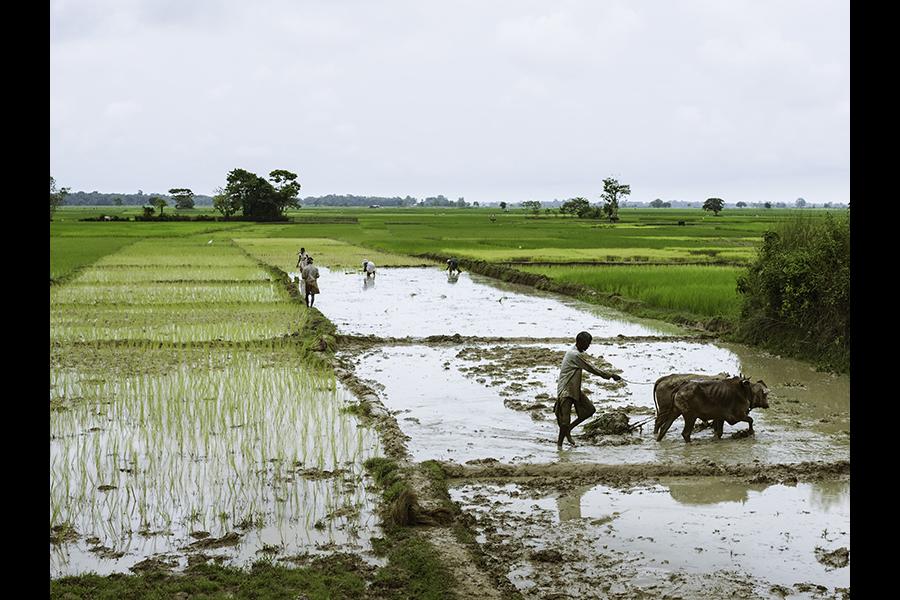Why a normal monsoon matters more this year
Since 1991, of the nine times that an El Niño condition manifested, only four led to a serious monsoon failure and drought. It is, therefore, reasonable to start with the assumption of normal monsoon for 2017.
The Indian Meteorological Department’s (IMD) forecast of normal monsoon in 2017 brought a huge sigh of relief. Global weather forecasters and the local private forecaster, SKYMET, were flagging warning of an El Nino condition leading to a sub-normal monsoon this year. The IMD has forecast southwest monsoon showers at 96 percent of the long period average (LPA) with a margin of error of 5 percent on either side.
Yet, the threat of El Nino remains. Like other weather forecasting agencies, IMD also sees a possibility developing in the latter part of the monsoon. The good news is that an El Nino does not necessarily mean a drought year. Since 1991, of the nine times that an El Niño condition manifested, only four led to a serious monsoon failure and drought. It is, therefore, reasonable to start with the assumption of normal monsoon for 2017.
So why do rains matter? With half of Indian agriculture (accounting for 17 percent of GDP) without irrigation cover, rains matter even when the economy is doing well. India receives over two-thirds of the annual rains during the four months of the south-west monsoon season that begins in June. It is no surprise that the government, fast-moving consumer goods companies, automobile makers and manufactures of goods with rural exposure look up to the rain god every year for bountiful showers. This year, the rains matter even more as other engines of growth – in the non-agricultural sector – are not still firing on all cylinders.
Rural markets account for 47 percent of GDP and 54 percent of private consumption in India. Over 800 million people in India (69 percent of the population) live in rural areas – translating into 156 million households – of which 90 million have agriculture as the main source of income. With depressed growth rural wages, monsoon becomes an important source of rural income and for sustaining consumer demand for a variety of durables and non-durables.
Rural markets are now an important source of demand for a plethora of companies, which look up to hinterland as a means of increasing penetration of their products and services. Rural areas account for 34 percent of the value of the fast-moving consumer goods market, with more than half of India’s stock of consumer durables such as television sets, electric fans and two-wheelers is now in rural India. Half of rural households owned a television in fiscal 2012, up from 26 percent five years. Nearly a fifth rural households had a two-wheeler that year, although penetration remains well below the urban levels.
The economy is still straddled with excess capacity, particularly in the manufacturing sector, leading to depressed private investment outlook. That means consumption needs to grow much faster in order to stimulate private investment.
In such a scenario, a normal monsoon would support private consumption and the revival of investment cycle.
Inflation, especially food inflation, has been the bugbear of India’s policy makers. With the Reserve Bank of India (RBI) now targeting 4 percent consumer inflation over the medium run, a tight leash on food inflation becomes critical.
Besides rains, food inflation depends on a number of factors such as minimum support prices, buffer stocks, proactivity from government in curbing hoarding, timely imports and global food inflation.
Interestingly, even in bad monsoon years, food inflation has come down as other factors were favourable. For instance, food inflation did come down in two consecutive rain-deficient fiscals – 2015 and 2016 – due to improved food-supply management by the government such as releasing excess food stocks, checks on hoarding, and utilisation of the price stabilisation fund to subsidise the cost of imported pulses. In addition, global food price situation too was benign.
Some of these are now reversing – global food prices are rising and food grain stocks, even though above the buffer norm, have come down significantly.
Perishables such as fruits and vegetables continue to be rain-dependent since imports and stocks have an insignificant role in bolstering supplies. With a 23 percent weight in the food index, perishables inflation can spike if production is disrupted due to bad rains.
In addition, monsoon has an important role in ensuring replenishment of reservoirs, drinking water availability and hydro power generation. The reservoirs currently running low particularly in the southern part of India. According to Central Water Commission data, water storage available in 91 major reservoirs of the country for the week ended April 20, 2017, was 29 percent of the capacity. Although this is higher than the average of the last decade, it’s clearly insufficient to meet the water needs if the monsoon fails.
Given the evolving scenario, a normal monsoon will play an important role in influencing agricultural production this year and keeping a tab on food inflation. Needless to emphasise that this will be a critical input into the RBI’s interest rate decisions as well.
- By Dharmakirti Joshi, Chief Economist, CRISIL
The thoughts and opinions shared here are of the author.
Check out our end of season subscription discounts with a Moneycontrol pro subscription absolutely free. Use code EOSO2021. Click here for details.
